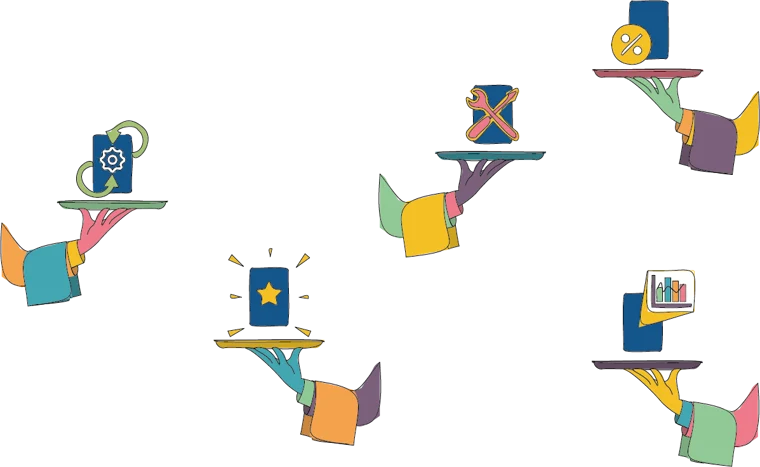As businesses navigate the complexities of modern markets, service-dominant logic (S-D logic) emerges as a key driver of innovation and competitiveness. Our experience with clients across various industries has highlighted S-D logic as being not just a trend, but a fundamental shift in the innovation process. This article explores why S-D logic is essential for future innovation, its impact on businesses, and how organisations can integrate it into their operations.
The shift from product-centric to service-centric models is becoming increasingly apparent across B2C and B2B sectors. This transformation, fuelled by digital advancements, requires a rethinking of market offerings. S-D logic advocates for a service-based approach where value is co-created with customers through engagement, rather than being a static feature of the product. This approach is becoming vital for businesses seeking to grow and maintain market relevance.
At the core of S-D logic is the principle that value is not inherently embedded in products or services but is instead realised in the moment of use.
In this model, products become part of a broader service offering, which includes elements like digital services, customer engagement, ecosystem partnerships, and continuous solution evolution. It emphasises that value is created collaboratively by each stakeholder, rather than being a product manufactured by a company and then distributed to customers. The transition to S-D logic means that innovation is no longer a pre-launch activity but a continuous process of adapting and refining offerings based on real-time market feedback and customer involvement.
Companies adopting S-D logic will witness a significant transformation in their product development and customer engagement strategies. This shift allows for more personalised solutions, functioning essentially as engagement platforms enabling businesses to have a more accurate and live understanding of market dynamics, leading to more informed decision-making and agile responses to market changes. For FMCG brands, it leads to products that are more embedded into service-oriented ecosystems that drive loyalty and retention. Those unable to adopt this approach will likely struggle to keep pace with market leaders.
Several pioneering companies have already embraced elements of S-D logic, driven by technological enablement:
The banking industry’s transition from call centres to contact centres offering multiple channels for real-time engagement is a move towards S-D logic, enhancing service responsiveness and accessibility. In making this transition, banks have benefitted from reduced negative PR in the media, fostering loyalty and brand trust.
Supermarket self-serve checkouts represent a shift towards more frequent, customer-participative shopping experiences. These faster, autonomous interactions have improved satisfaction and efficiency for the consumer, and supermarkets have benefitted from operational streamlining and reduced labour costs, allowing them to reallocate staff to value-added services.
Beiersdorf’s Skinly device offers personalised skincare solutions based on individual skin conditions, enhancing user satisfaction and potentially increasing customer retention through targeted sales.
Voice control products like Alexa require customer participation for optimal functionality, showcasing co-creation in technology. For companies, this engagement provides valuable insights for continuous product improvement and market positioning as innovative technology leaders.
For businesses, the adoption of S-D logic is not merely an option but a necessity to stay ahead of the competition in today’s rapidly changing business world. It’s an opportunity for organisations to take control and position themselves as future market leaders. S-D logic requires a deep understanding of customer needs and preferences, enabling businesses to create more relevant and engaging offerings. At 42T, we have observed the benefits of S-D logic in our work with clients, helping them transition from traditional product-centric models to service-oriented, customer-focused approaches.
The future of innovation lies in embracing service-dominant logic. Businesses that understand and implement S-D logic will lead the market, offering solutions that are not only innovative but also deeply resonant with their customers. Shifting to a service-dominant model is not just about staying competitive; it’s about redefining the way value is created and delivered in the digital age.

